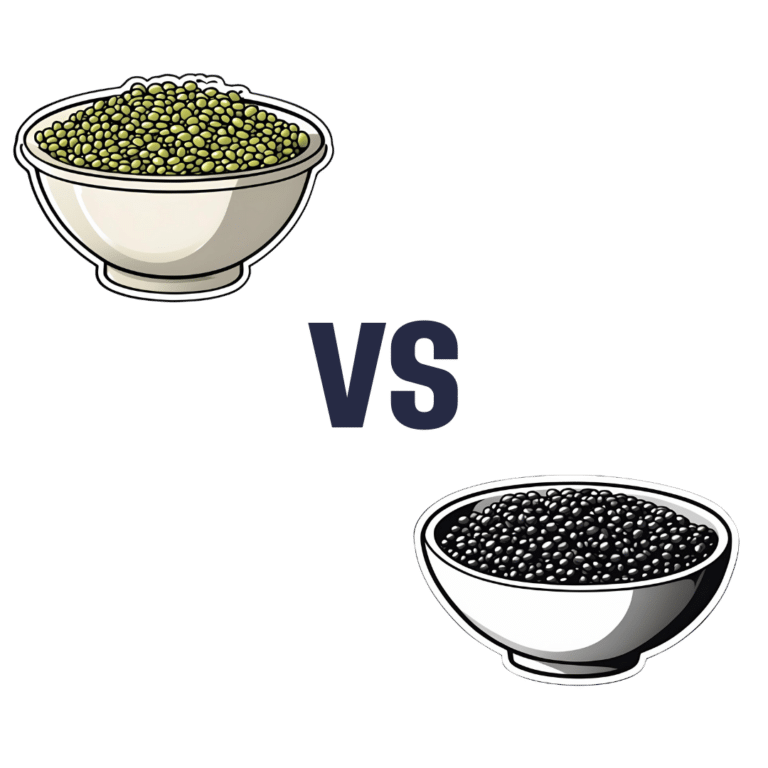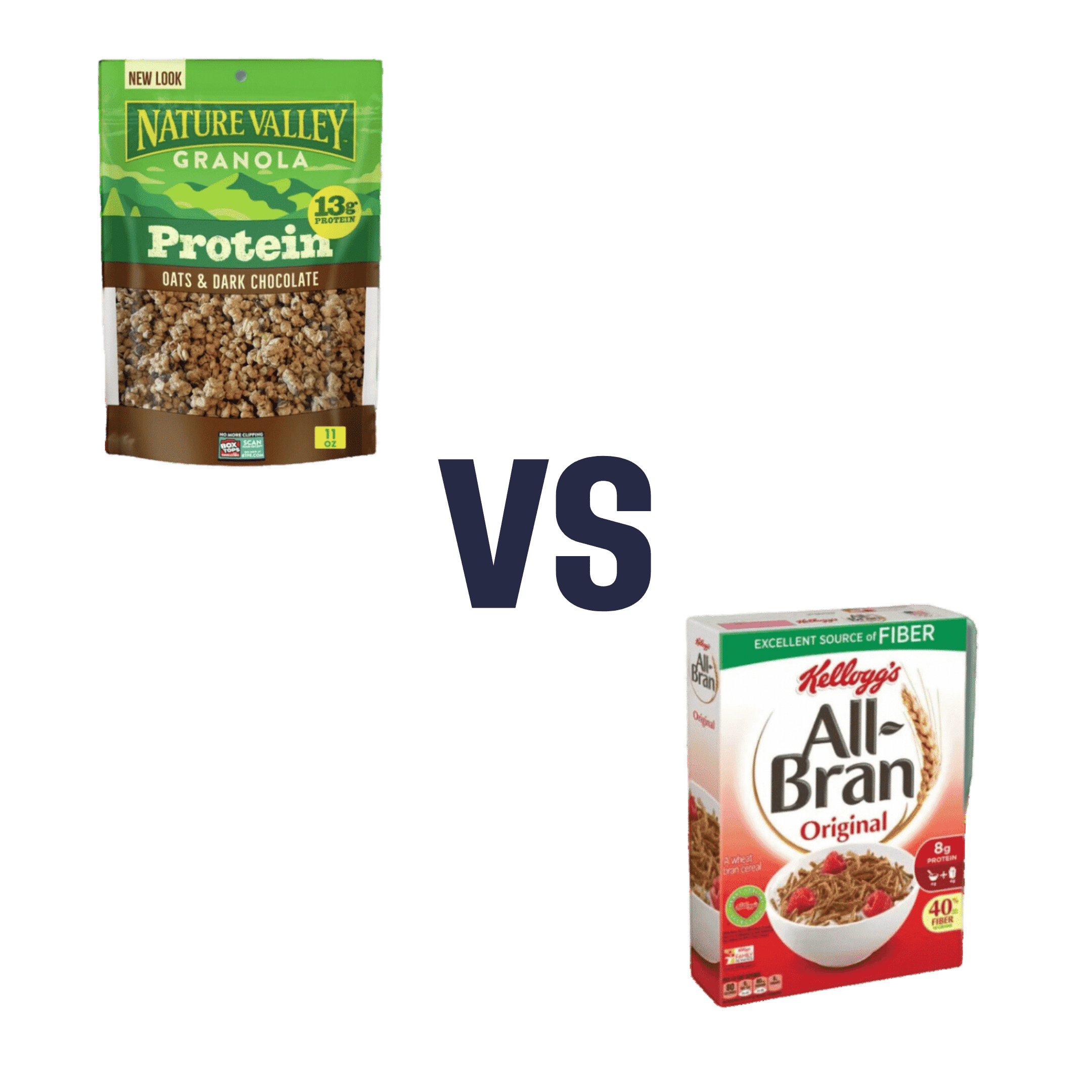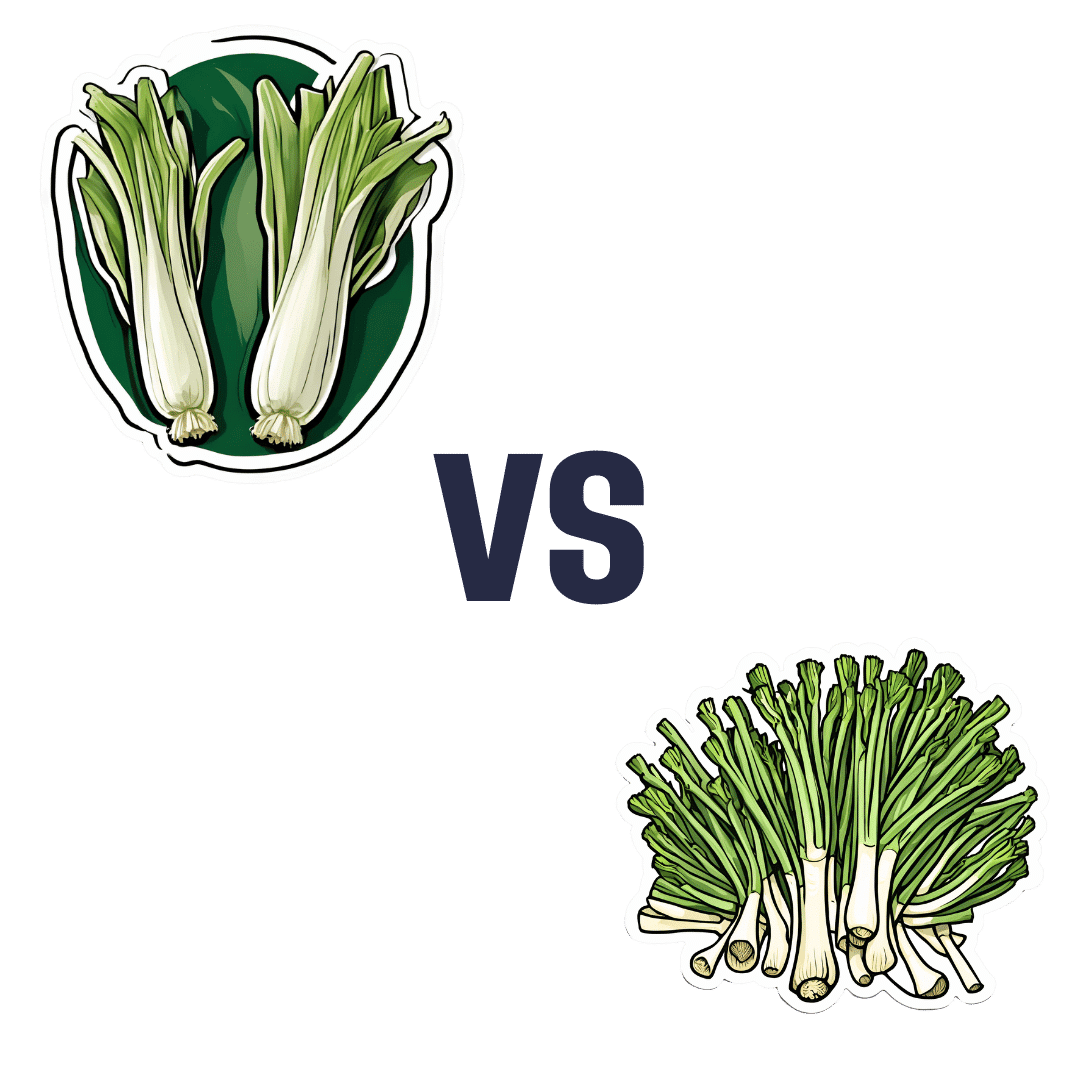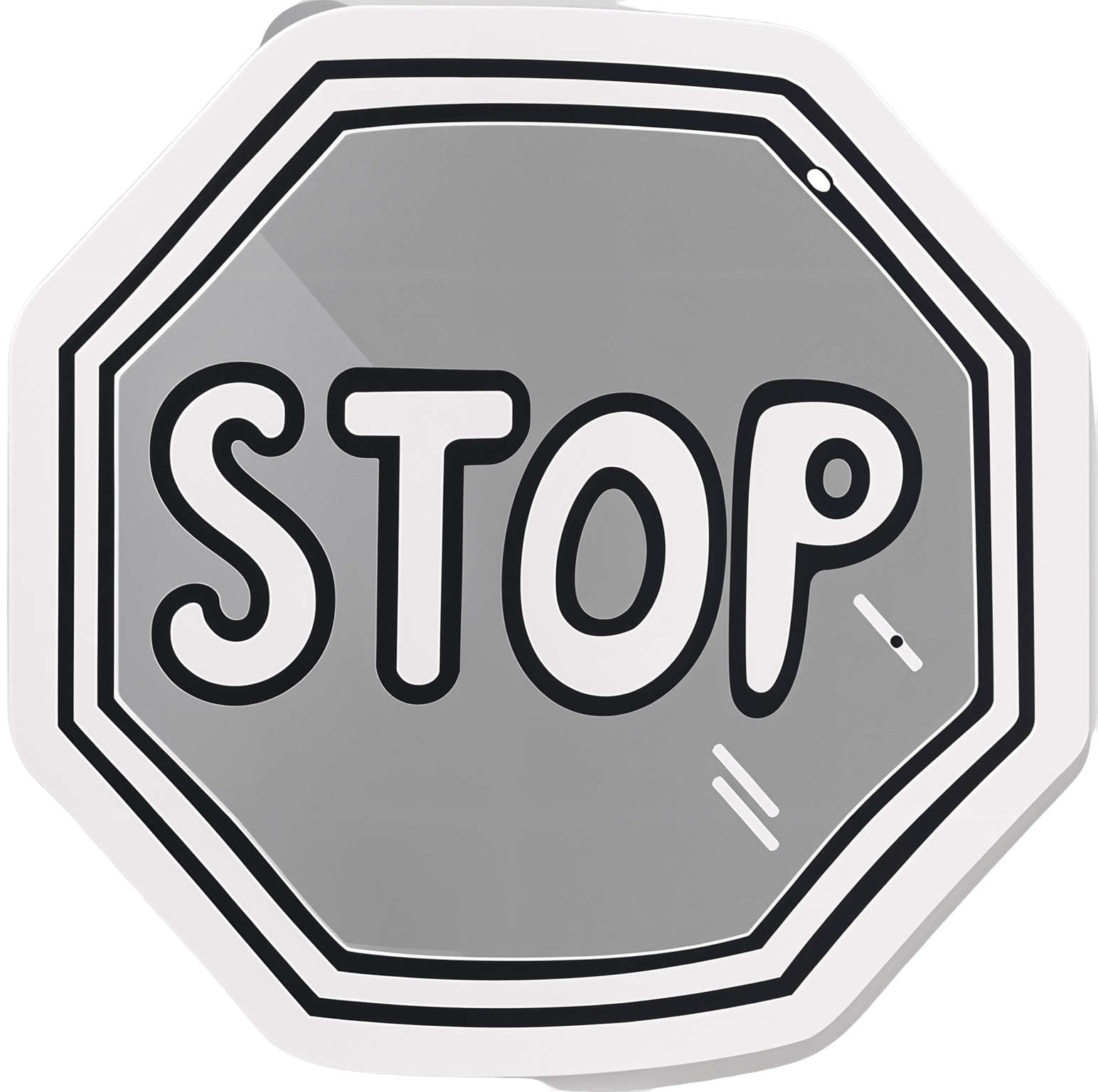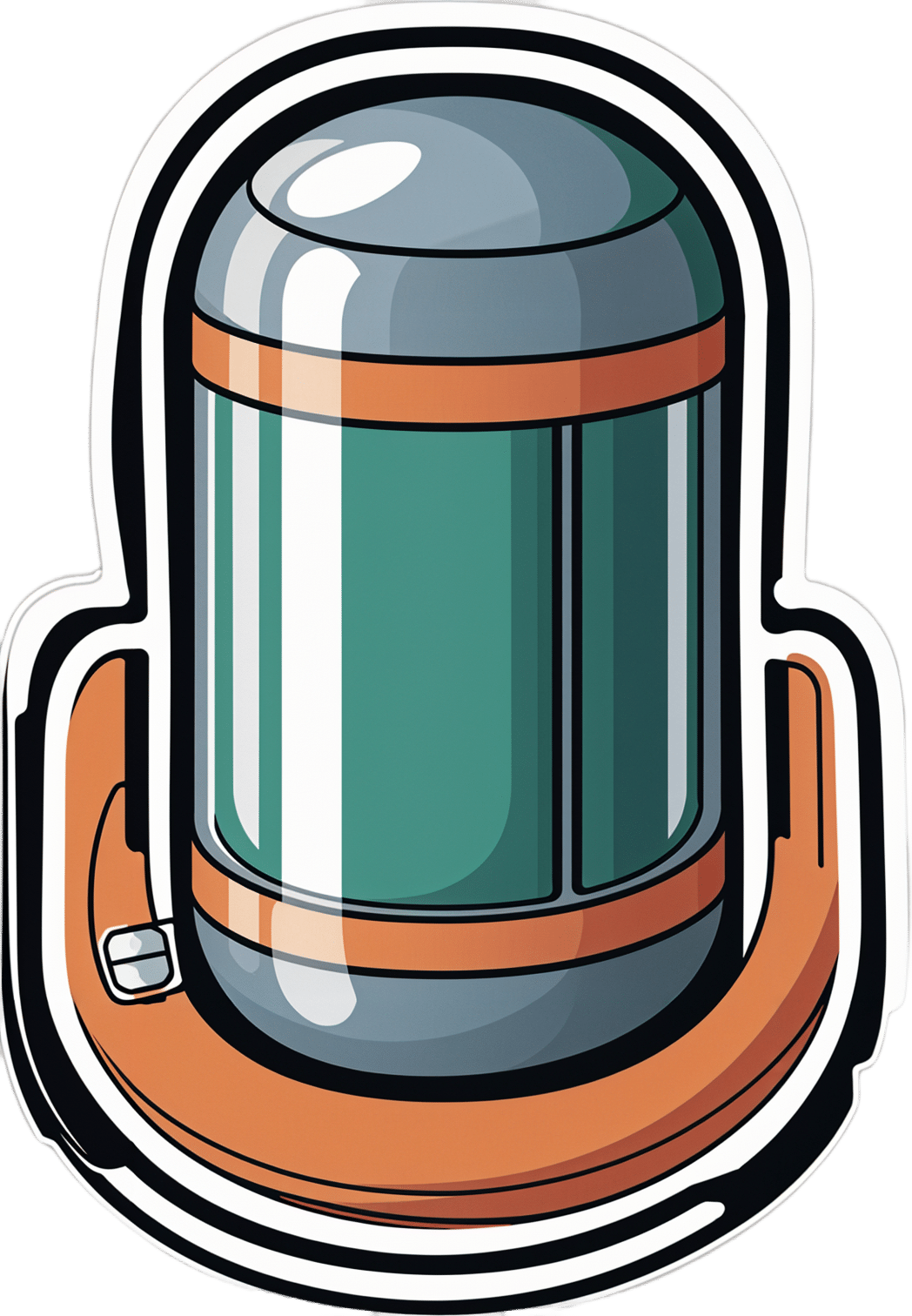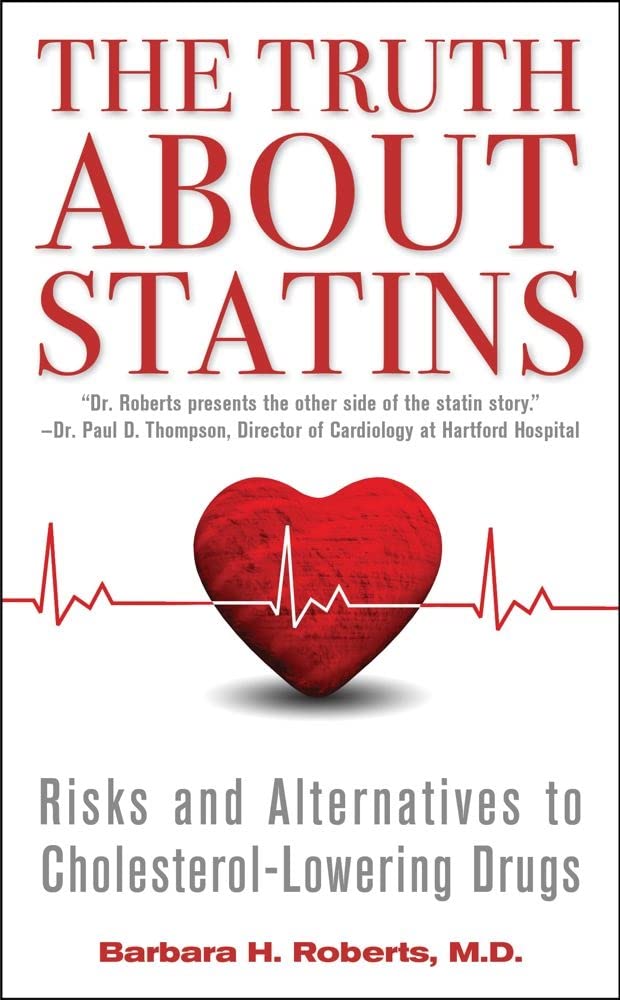
Celery vs Cucumber – Which is Healthier?
10almonds is reader-supported. We may, at no cost to you, receive a portion of sales if you purchase a product through a link in this article.
Our Verdict
When comparing celery to cucumber, we picked the celery.
Why?
They are both great, of course! But celery came out on top:
Their macros are very comparable; they’re both 95% water with just enough other things to hold them together, and those other things are in approximately the same proportions in both celery and cucumber.
In the category of vitamins, however, celery has a lot more of vitamins A, B2, B3, B6, B9, E, and K, as well as slightly more vitamin C. Cucumber, meanwhile, only boasts slightly higher vitamin B1.
An easy win for celery on the vitamin front!
Minerals are closer, but celery still comes out on top with its notably higher calcium and potassium content. Cucumber has more iron and zinc, but the margin is smaller.
As a point in cucumber’s favor, it has been noted for its anti-inflammatory effect in ways that celery hasn’t, but we don’t think this is enough to say it wins over celery sweeping the vitamins category and coming out top for minerals too.
However! They are both great, so enjoy them both, of course.
Want to learn more?
You might like to read:
- Cucumber Extract Beats Glucosamine & Chondroitin… At 1/135th Of The Dose?!
- Some Surprising Truths About Hunger And Satiety ← both celery and cucumber are great for this
Enjoy!
Don’t Forget…
Did you arrive here from our newsletter? Don’t forget to return to the email to continue learning!
Recommended
Learn to Age Gracefully
Join the 98k+ American women taking control of their health & aging with our 100% free (and fun!) daily emails:
-
Curious Kids: what are the main factors in forming someone’s personality?
10almonds is reader-supported. We may, at no cost to you, receive a portion of sales if you purchase a product through a link in this article.
“What are the main factors in forming someone’s personality?” – Emma, age 10, from Shanghai
Hello Emma, and thank you for this very interesting question!
Let’s start by exploring what we mean by personality. Have you noticed no two people are completely alike? We all see, experience, and understand the world in different ways.
For example, some people love spending time with friends and being the centre of attention, whereas other people are more shy and enjoy having time to themselves.
Your unique personality is shaped by your genes as well as various influences in your environment. And your personality plays an important role in how you interact with the world.
The big five
Did you know there are scientists who spend time researching personality? Their research is concerned with describing the ways people differ from each other, and understanding how these differences could be important for other parts of life such as our health and how well we do in school or at work.
There are many different perspectives on personality. A widely accepted viewpoint based on a lot of research is called the five factor model or the “big five”. According to this theory, a great deal of a person’s personality can be summarised in terms of where they sit on five dimensions, called traits:
- the introversion-extraversion trait refers to how much someone is outgoing and social (extroverted) or prefers being with smaller groups of friends or focusing on their own thoughts (introverted)
- agreeableness captures how much someone tends to be cooperative and helps others
- openness to experience refers to how much a person is creative and enjoys experiencing new things
- neuroticism describes a person’s tendency to experience negative feelings, like worrying about things that could go wrong
- conscientiousness encompasses how much a person is organised, responsible, and dedicated to things that are important to them, like schoolwork or training for a sports team.
A person can have high, low, or moderate levels of each of these traits. And understanding whether someone has higher or lower levels of the big five can tell us a lot about how we might expect them to behave in different situations.
So what shapes our personalities?
A number of factors shape our personalities, including our genes and social environment.
Our bodies are made up of many very small structures called cells. Within these cells are genes. We inherit genes from our parents, and they carry the information needed to make our bodies and personalities. So, your personality may be a bit like your parents’ personalities. For example, if you’re an outgoing sort of person who loves to meet new people, perhaps one or both of your parents are very social too.
Our personalities are influenced by the genes we get from our parents.
KieferPix/ShutterstockPersonalities are also affected by our environment, such as our experiences and our relationships with family and friends. For example, some research has shown our relationships with our parents can influence our personality. If we have loving and warm relationships, we may be more agreeable and open. But if our relationships are hurtful or stressful, this may increase our neuroticism.
Another study showed that, over time, young children who were more physically active were less introverted (less shy) and less likely to get very upset when things don’t go their way, compared to children who were less physically active. Although we don’t know why this is for sure, one possible explanation is that playing sport leads to reduced shyness because it introduces children to different people.
While we’re learning more about personality development all the time, research in this area presents quite a few challenges. Many different biological, cultural and environmental influences shape our development, and these factors can interact with each other in complex ways.
Is our personality fixed once we become adults?
Although we develop most of our personality when we are young, and people’s personalities tend to become more stable as they get older, it is possible for aspects of a person’s personality to change, even when they are fully grown.
A good example of this can be seen among people who seek treatment for conditions like anxiety or depression. People who respond well to working with a psychologist can show decreases in neuroticism, indicating they become less likely to worry a lot or feel strong negative feelings when something stressful happens.
Hello, Curious Kids! Do you have a question you’d like an expert to answer? Ask an adult to send your question to mailto:[email protected]
Tim Windsor, Professor, Director, Generations Research Initiative, College of Education, Psychology and Social Work, Flinders University and Natalie Goulter, Lecturer, College of Education, Psychology and Social Work, Flinders University
This article is republished from The Conversation under a Creative Commons license. Read the original article.
Share This Post
-
Nature Valley Protein Granola vs Kellog’s All-Bran – Which is Healthier?
10almonds is reader-supported. We may, at no cost to you, receive a portion of sales if you purchase a product through a link in this article.
Our Verdict
When comparing Nature Valley Protein Granola to Kellog’s All-Bran, we picked the All-Bran.
Why?
While the Protein Granola indeed contains more protein (13g/cup, compared to 5g/cup), it also contains three times as much sugar (18g/cup, compared to 9g/cup) and only ⅓ as much fiber (4g/cup, compared to 12g/cup)
Given that fiber is what helps our bodies to absorb sugar more gently (resulting in fewer spikes), this is extremely important, especially since 18g of sugar in one cup of Protein Granola is already most of the recommended daily allowance, all at once!
For reference: the AHA recommends no more than 25g added sugar for women, or 32g for men
Hence, we went for the option with 3x as much fiber and ⅓ of the sugar, the All-Bran.
For more about keeping blood sugars stable, see:
10 Ways To Balance Blood Sugars
Enjoy!
Share This Post
-
Leek vs Scallions – Which is Healthier?
10almonds is reader-supported. We may, at no cost to you, receive a portion of sales if you purchase a product through a link in this article.
Our Verdict
When comparing leek to scallions, we picked the leek.
Why?
In terms of macros, scallions might have a point: scallions have the lower glycemic index, thanks to leek having more carbs for the same amount of fiber. That said, leek already has a low glycemic index, so this is not a big deal.
When it comes to vitamins, leek has more of vitamins B1, B2, B3, B5, B6, B9, E, and choline, while scallions have more of vitamins A, C, and K. Noteworthily, a cup of chopped leek already provides the daily dose of vitamins A and K, and the difference in levels of vitamin C is minimal. All in all, an easy 8:3 win for leeks here, even without taking that into account.
In the category of minerals, leek has more calcium, copper, iron, magnesium, manganese, phosphorus, potassium, and selenium, while scallions have a little more zinc.
Both of these allium-family plants (i.e., related to garlic) have an abundance of polyphenols, especially kaempferol.
Of course, enjoy whatever goes best with your meal, but if you’re looking for nutritional density, then leek is where it’s at.
Want to learn more?
You might like to read:
The Many Health Benefits Of Garlic
Take care!
Share This Post
Related Posts
-
The Dark Side Of Memory (And How To Make Your Life Better)
10almonds is reader-supported. We may, at no cost to you, receive a portion of sales if you purchase a product through a link in this article.
How To Stop Revisiting Those Memories
We’ve talked before about putting the brakes on negative thought spirals (and that’s a really useful technique, so if you weren’t with us yet for that one, we do recommend hopping back and reading it!).
We’ve also talked about optimizing memory, to include making moments unforgettable.
But what about the moments we’d rather forget?
First, a quick note: we have no pressing wish or need to re-traumatize any readers, so if you’ve a pressing reason to think your memories you’d rather forget are beyond the scope of a few hundred words “one quick trick” in a newsletter, feel free to skip this section today.
One more quick note: it is generally not considered healthy to repress important memories. Some things are best worked through consciously in therapy with a competent professional.
Today’s technique is more for things in the category of “do you really need to keep remembering that one time you did something embarrassing 20 years ago?”
That said… sometimes, even when it does come to the management of serious PTSD, therapy can (intentionally, reasonably) throw in the towel on processing all of something big, and instead seek to simply look at minimizing its effect on ongoing life. Again, that’s best undertaken with a well-trained professional, however.
For more trivial annoyances, meanwhile…
Two Steps To Forgetting
The first step:
You may remember that memories are tied to the senses, and the more senses are involved, the more easily and fully we remember a thing. To remember something, therefore, we make sure to pay full attention to all the sensory experience of the memory, bringing in all 5 senses if possible.
To forget, the reverse is true. Drain the memory of color, make it black and white, fuzzier, blurrier, smaller, further away, sterile, silent, gone.
You can make a habit of doing this automatically whenever your unwanted memory resurfaces.
The
secondmissing step:This is the second step, but it’s going to be a missing step. Memories, like paths in a forest, are easier to access the more often we access them. A memory we visit every day will have a well-worn path, easy to follow. A memory we haven’t visited for decades will have an overgrown, sometimes nearly impossible-to-find path.
To labor the metaphor a little: if your memory has literal steps leading to it, we’re going to remove one of the steps now, to make it very difficult to access accidentally. Don’t worry, you can always put the step back later if you want to.
Let’s say you want to forget something that happened once upon a time in a certain workplace. Rather than wait for the memory in question to come up, we’re going to apply the first step that we just learned, to the entire workplace.
So, in this example, you’d make the memory of that workplace drained of color, made black and white, fuzzier, blurrier, smaller, further away, sterile, silent, gone.
Then, you’d make a habit of doing that whenever that workplace nearly comes to mind.
The result? You’re unlikely to accidentally access a memory that occurred in that workplace, if even mentally wandering to the workplace itself causes it to shrivel up and disappear like paper in fire.
Important reminder
The above psychological technique is to psychological trauma what painkillers are to physical pain. It can ease the symptom, while masking the cause. If it’s something serious, we recommend enlisting the help of a professional, rather than “self-medicating” in this fashion.
If it’s just a small annoying thing, though, sometimes it’s easier to just be able to refrain from prodding and poking it daily, forget about it, and enjoy life.
Don’t Forget…
Did you arrive here from our newsletter? Don’t forget to return to the email to continue learning!
Learn to Age Gracefully
Join the 98k+ American women taking control of their health & aging with our 100% free (and fun!) daily emails:
-
Psychoactive Drugs Are Having a Moment. The FDA Will Soon Weigh In.
10almonds is reader-supported. We may, at no cost to you, receive a portion of sales if you purchase a product through a link in this article.
Lori Tipton is among the growing number of people who say that MDMA, also known as ecstasy, saved their lives.
Raised in New Orleans by a mother with untreated bipolar disorder who later killed herself and two others, Tipton said she endured layers of trauma that eventually forced her to seek treatment for crippling anxiety and hypervigilance. For 10 years nothing helped, and she began to wonder if she was “unfixable.”
Then she answered an ad for a clinical trial for MDMA-assisted therapy to treat post-traumatic stress disorder. Tipton said the results were immediate, and she is convinced the drug could help a lot of people. But even as regulators weigh approval of the first MDMA-based treatment, she’s worried that it won’t reach those who need it most.
“The main thing that I’m always concerned about is just accessibility,” the 43-year-old nonprofit project manager said. “I don’t want to see this become just another expensive add-on therapy for people who can afford it when people are dying every day by their own hand because of PTSD.”
MDMA is part of a new wave of psychoactive drugs that show great potential for treating conditions such as severe depression and PTSD. Investors are piling into the nascent field, and a host of medications based on MDMA, LSD, psychedelic mushrooms, ketamine, the South American plant mixture ayahuasca, and the African plant ibogaine are now under development, and in some cases vying for approval by the Food and Drug Administration.
Proponents hope the efforts could yield the first major new therapies for mental illness since the introduction of modern antidepressants in the 1980s. But not all researchers are convinced that their benefits have been validated, or properly weighed against the risks. And they can be difficult to assess using traditional clinical trials.
The first MDMA-assisted assisted therapy appeared to be on track for FDA approval this August, but a recent report from an independent review committee challenged the integrity of the trial data from the drug’s maker, Lykos Therapeutics, a startup founded by a psychedelic research and advocacy group. The FDA will convene a panel of independent investigators on June 4 to determine whether to recommend the drug’s approval.
Proponents of the new therapies also worry that the FDA will impose treatment protocols, such as requiring multiple trained clinicians to monitor a patient for extended periods, that will render them far too expensive for most people.
Tipton’s MDMA-assisted therapy included three eight-hour medication sessions overseen by two therapists, each followed by an overnight stay at the facility and an integration session the following day.
“It does seem that some of these molecules can be administered safely,” said David Olson, director of the University of California-Davis Institute for Psychedelics and Neurotherapeutics. “I think the question is can they be administered safely at the scale needed to really make major improvements in mental health care.”
Breakthrough Therapies?
Psychedelics and other psychoactive substances, among the medicines with the oldest recorded use, have long been recognized for their potential therapeutic benefits. Modern research on them started in the mid-20th century, but clinical trial results didn’t live up to the claims of advocates, and they eventually got a bad name both from their use as party drugs and from rogue CIA experiments that involved dosing unsuspecting individuals.
The 1970 Controlled Substances Act made most psychoactive drugs illegal before any treatments were brought to market, and MDMA was classified as a Schedule 1 substance in 1985, which effectively ended any research. It wasn’t until 2000 that scientists at Johns Hopkins University were granted regulatory approval to study psilocybin anew.
Ketamine was in a different category, having been approved as an anesthetic in 1970. In the early 2000s, researchers discovered its antidepressant effects, and a ketamine-based therapy, Spravato, received FDA approval in 2019. Doctors can also prescribe generic ketamine off-label, and hundreds of clinics have sprung up across the nation. A clinical trial is underway to evaluate ketamine’s effectiveness in treating suicidal depression when used with other psychiatric medications.
Ketamine’s apparent effectiveness sparked renewed interest in the therapeutic potential of other psychoactive substances.
They fall into distinct categories: MDMA is an entactogen, also known as an empathogen, which induces a sense of connectedness and emotional communion, while LSD, psylocibin, and ibogaine are psychedelics, which create altered perceptual states. Ketamine is a dissociative anesthetic, though it can produce hallucinations at the right dose.
Despite the drugs’ differences, Olson said they all create neuroplasticity and allow the brain to heal damaged neural circuits, which imaging shows can be shriveled up in patients with addiction, depression, and PTSD.
“All of these brain conditions are really disorders of neural circuits,” Olson said. “We’re basically looking for medicines that can regrow these neurons.”
Psychedelics are particularly good at doing this, he said, and hold promise for treating diseases including Alzheimer’s.
A number of psychoactive drugs have now received the FDA’s “breakthrough therapy” designation, which expedites development and review of drugs with the potential to treat serious conditions.
But standard clinical trials, in which one group of patients is given the drug and a control group is given a placebo, have proven problematic, for the simple reason that people have no trouble determining whether they’ve gotten the real thing.
The final clinical trial for Lykos’ MDMA treatment showed that 71% of participants no longer met the criteria for PTSD after 18 weeks of taking the drug versus 48% in the control group.
A March report by the Institute for Clinical and Economic Review, an independent research group, questioned the company’s clinical trial results and challenged the objectivity of MDMA advocates who participated in the study as both patients and therapists. The institute also questioned the drug’s cost-effectiveness, which insurers factor into coverage decisions.
Lykos, a public benefit company, was formed in 2014 as an offshoot of the Multidisciplinary Association for Psychedelic Studies, a nonprofit that has invested more than $150 million into psychedelic research and advocacy.
The company said its researchers developed their studies in partnership with the FDA and used independent raters to ensure the reliability and validity of the results.
“We stand behind the design and results of our clinical trials,” a Lykos spokesperson said in an email.
There are other hazards too. Psychoactive substances can put patients in vulnerable states, making them potential victims for financial exploitation or other types of abuse. In Lykos’ second clinical trial, two therapists were found to have spooned, cuddled, blindfolded, and pinned down a female patient who was in distress.
The substances can also cause shallow breathing, heart issues, and hyperthermia.
To mitigate risks, the FDA can put restrictions on how drugs are administered.
“These are incredibly potent molecules and having them available in vending machines is probably a bad idea,” said Hayim Raclaw of Negev Capital, a venture capital fund focused on psychedelic drug development.
But if the protocols are too stringent, access is likely to be limited.
Rachel del Dosso, a trauma therapist in the greater Los Angeles area who offers ketamine-assisted therapy, said she’s been following the research on drugs like MDMA and psilocybin and is excited for their therapeutic potential but has reservations about the practicalities of treatment.
“As a therapist in clinical practice, I’ve been thinking through how could I make that accessible,” she said. “Because it would cost a lot for [patients] to have me with them for the whole thing.”
Del Dosso said a group therapy model, which is sometimes used in ketamine therapy, could help scale the adoption of other psychoactive treatments, too.
Artificial Intelligence and Analogs
Researchers expect plenty of new discoveries in the field. One of the companies Negev has invested in, Mindstate Design Labs, uses artificial intelligence to analyze “trip reports,” or self-reported drug experiences, to identify potentially therapeutic molecules. Mindstate has asked the FDA to green-light a clinical trial of the first molecule identified through this method, 5-MeO-MiPT, also known as moxy.
AlphaFold, an AI program developed by Google’s DeepMind, has identified thousands of potential psychedelic molecules.
There’s also a lot of work going into so-called analog compounds, which have the therapeutic effects of hallucinogens but without the hallucinations. The maker of a psilocybin analog announced in March that the FDA had granted it breakthrough therapy status.
“If you can harness the neuroplasticity-promoting properties of LSD while also creating an antipsychotic version of it, then that can be pretty powerful,” Olson said.
This article was produced by KFF Health News, which publishes California Healthline, an editorially independent service of the California Health Care Foundation.
KFF Health News is a national newsroom that produces in-depth journalism about health issues and is one of the core operating programs at KFF—an independent source of health policy research, polling, and journalism. Learn more about KFF.
Subscribe to KFF Health News’ free Morning Briefing.
Don’t Forget…
Did you arrive here from our newsletter? Don’t forget to return to the email to continue learning!
Learn to Age Gracefully
Join the 98k+ American women taking control of their health & aging with our 100% free (and fun!) daily emails:
-
The Truth About Statins – by Barbara H. Roberts, M.D.
10almonds is reader-supported. We may, at no cost to you, receive a portion of sales if you purchase a product through a link in this article.
All too often, doctors looking to dispense a “quick fix” will prescribe from their playbook of a dozen or so “this will get you out of my office” drugs. Most commonly, things that treat symptoms rather than the cause. Sometimes, this can be fine! For example, in some cases, painkillers and antidepressants can make a big improvement to people’s lives. What about statins, though?
Prescribed to lower cholesterol, they broadly do exactly that. However…
Dr. Roberts wants us to know that we could be missing the big picture of heart health, and making a potentially fatal mistake.
This is not to say that the book argues that statins are necessarily terrible, or that they don’t have their place. Just, we need to understand what they will and won’t do, and make an informed choice.
To which end, she does advise regards when statins can help the most, and when they may not help at all. She also covers the questions to ask if your doctor wants to prescribe them. And—all so frequently overlooked—the important differences between men’s and women’s heart health, and the implications these have for the efficacy (or not) of statins.
With regard to the “alternatives to cholesterol-lowering drugs” promised in the subtitle… we won’t keep any secrets here:
Dr. Roberts (uncontroversially) recommends the Mediterranean diet. She also provides two weeks’ worth of recipes for such, in the final part of the book.
All in all, an important book to read if you or a loved one are taking, or thinking of taking, statins.
Pick up your copy of The Truth About Statins on Amazon today!
Don’t Forget…
Did you arrive here from our newsletter? Don’t forget to return to the email to continue learning!
Learn to Age Gracefully
Join the 98k+ American women taking control of their health & aging with our 100% free (and fun!) daily emails:

